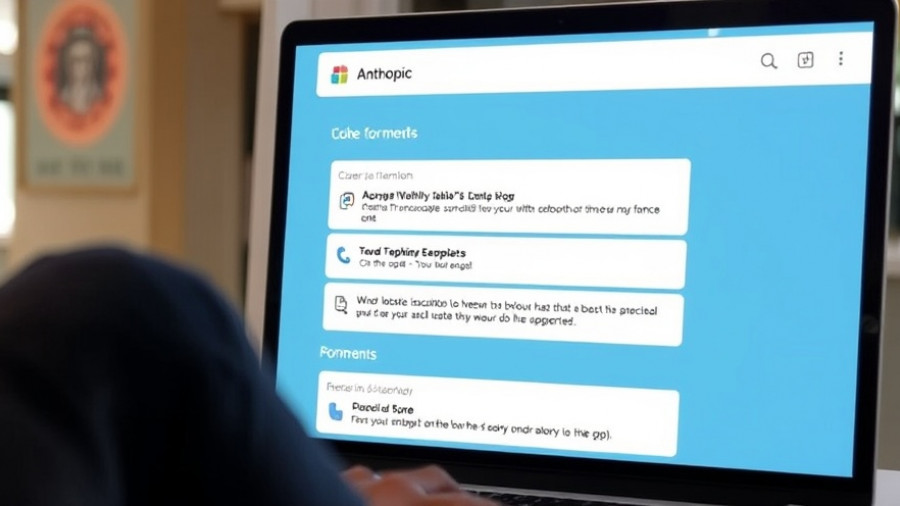
The AI Tool Revolution: What’s on the Horizon?
Artificial Intelligence is transforming industries across the board, and software development is no exception. Tools like GPT-5, Claude 4.1, and Cursor CLI are leading the charge, revolutionizing coding practices, reducing errors, and enhancing creativity. As we dive deeper into these advanced platforms, we uncover why understanding their differences is crucial for developers, companies, and aspiring tech enthusiasts alike.
Unpacking GPT-5: The Coding Powerhouse
GPT-5 has set the standard for what we can expect from AI coding tools. It handles complex tasks with significant efficiency, making it ideal for intricate projects. For instance, when tasked with building customer relationship management (CRM) systems or extracting financial data, GPT-5's performance surpasses that of its competitors. Combined with its affordability, developers find it to be an attractive option, particularly for those working within budget constraints.
Moreover, the size of GPT-5’s token context window allows for more detailed conversations, facilitating a level of back-and-forth that is essential for complex problem-solving. This feature not only boosts productivity but also encourages developers to engage more deeply with AI, enhancing their own coding skills in the process.
Claude 4.1: Crafting Creativity in Code
On the other hand, Claude 4.1 takes a different approach. While it may not excel at practical coding tasks as GPT-5 does, its strength lies in its aesthetic output. Designed primarily for creative applications, Claude 4.1 shines when involved in UI prototyping, branding, and other visually-driven tasks. However, as appealing as it may be for artistic endeavors, its higher price point may deter many developers looking for cost-effective solutions.
The challenge for Claude lies in balancing its design capabilities with functional performance. For many developers, coding tools must address practical needs efficiently, and thus, while Claude offers incredible design output, it still has a significant gap to close in coding functionality.
Cursor CLI: Advancing Flexibility
Cursor CLI enters the fray with a unique proposition—model agnosticism. This flexible framework allows developers to switch between different AI models seamlessly, catering to various needs throughout the development process. The structure of Cursor CLI encourages experimentation and adaptation, ushering in a new age of software development.
However, while its flexibility is appealing, Cursor CLI requires further refinement to compete effectively against established tools like GPT-5 and Claude 4.1. Developers will keep a keen eye on how this tool evolves and whether it can gain traction in the competitive landscape of AI-powered coding.
The Future of AI in Software Development
As developers and designers assess the tools available to them, the ongoing advancements in AI technology present an exciting opportunity. The challenges ahead include not just choosing between these tools but figuring out how to leverage their unique strengths effectively.
Realistically, the choice isn’t merely about features; it revolves around each user’s specific needs and aspirations. Whether it’s mastering code efficiently through GPT-5, capitalizing on design sophistication with Claude 4.1, or harnessing the flexibility of Cursor CLI, each path offers unique benefits toward shaping the future of software development.
Understanding the Landscape
As we stand on the precipice of this new era in coding and design, the key takeaway is knowledge. Understanding the capabilities and limitations of these pioneering tools will empower developers to make informed decisions based on their project requirements and personal preferences. Developers eager to enhance their workflow and unleash their creativity must take the time to explore and experiment with these tools personally, setting a course for the next frontier in AI development.
This exploration is not just about enhancing productivity and creativity in software development but also about embracing a culture of innovation and adaptability.
 Add Row
Add Row  Add
Add 




Write A Comment